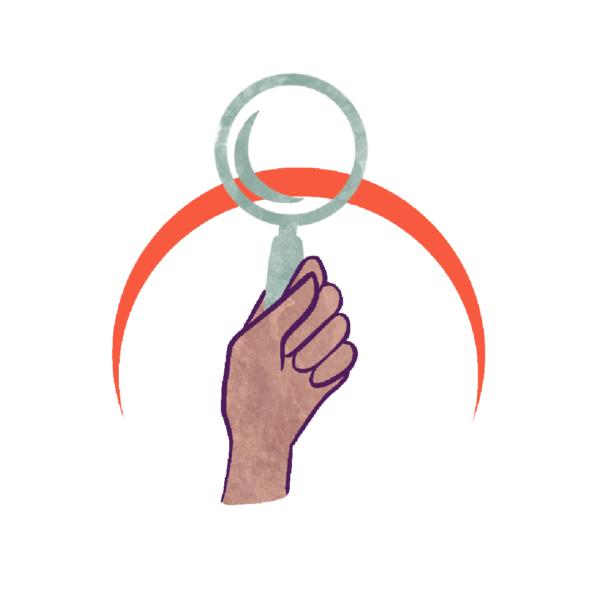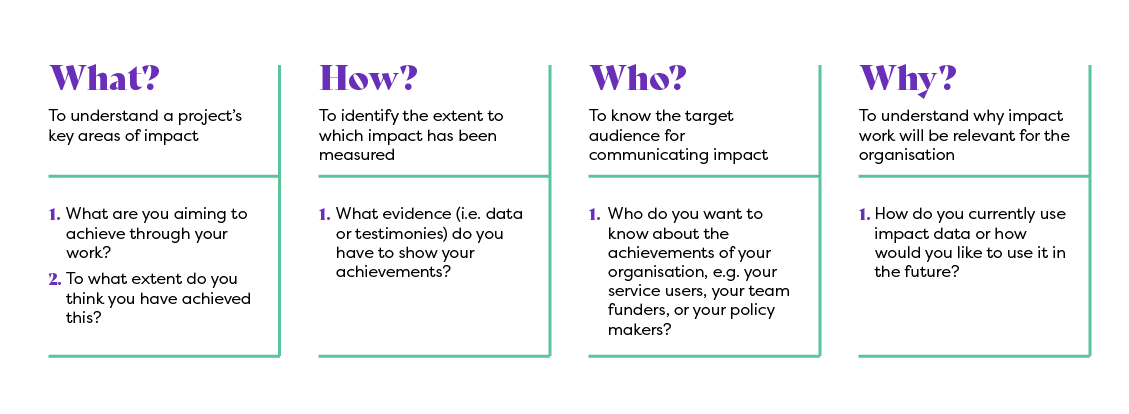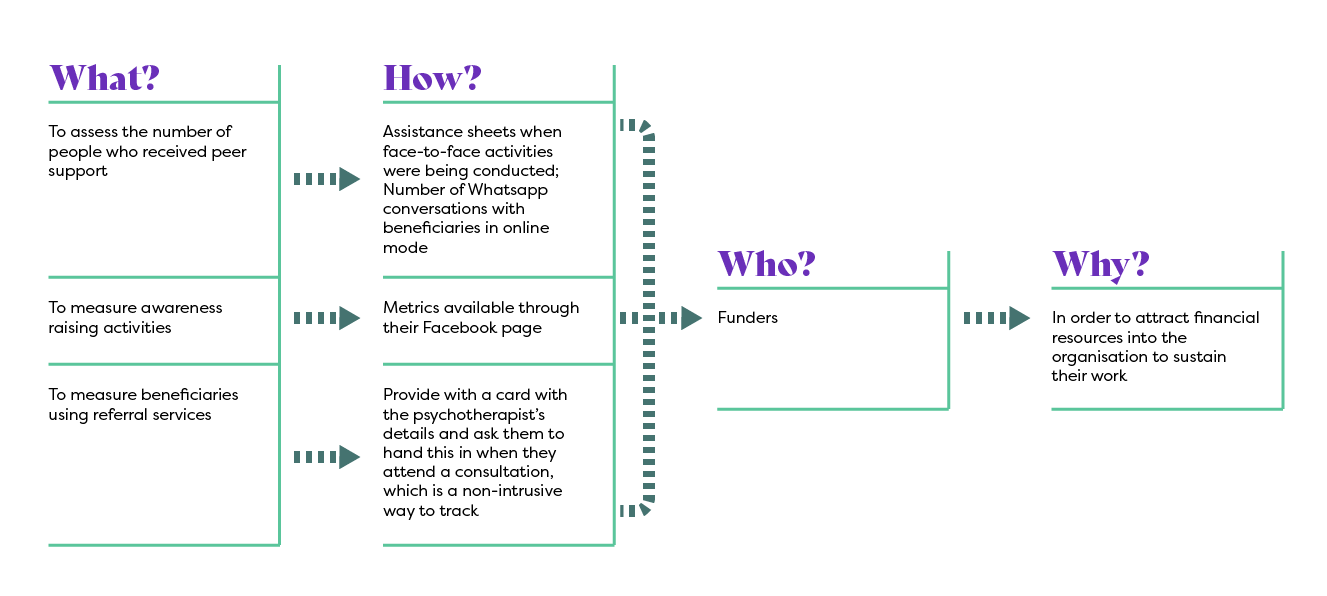Finding the right approach to capturing impact
Apr 19, 2021

At Ember, we firmly believe that working to understand your impact should be a priority for any organisation working in mental health, but the process of doing so looks different for every organisation.
Why do you need to customise your approach?
All of Ember’s partners are unique because:
They are located in varying contexts
They work with diverse populations
They have different approaches towards tackling mental health issues
Their understanding of what impact means to them differs, given they serve communities with varying priorities and needs.
They have different resources available and skill sets within their teams
It follows that the same methods for understanding your impact will not be appropriate for every initiative. For small organisations with limited resources, conducting large scale evaluations might mean that most of their energy and efforts are invested into collecting data in order to report their metrics, instead of doing the work that directly benefits their communities. Therefore, before deciding upon an impact strategy, it is essential to understand an organisation’s capacity to conduct impact work, the work that is already being done by their team in this area and how this fits with their long-term goals.
Discovering Impact: The Process
There are four critical questions about impact we explore in initial discussions with the organisations:

This information allows us to then discuss what the remaining needs of an organisation are in terms of impact and what resources are available to conduct impact work. The next section details how we implemented this process in practice by working with one of the organisations we partner with, Open Hands.
Implementing Impact Discovery: Open Hands
Open Hands is an organisation based in Botswana that aims to support LGBTI+ people, who face stigma and discrimination which has a huge impact on their lives and ultimately also on their mental health. They (1) provide peer support, (2) facilitate referrals to specialist mental health services and (3) raise awareness to change the negative perceptions about LGBTI+ people.
Through conversations with the team, we discovered the creative ways in which they had been assessing the impacts of their work despite the limited resources available.

How did Ember & Open Hands decide on the best impact approach?
The Open Hand’s team are currently all volunteers working on the project around their other jobs. Their most immediate priority is to obtain further funding to be able to expand their work. Even though Open Hands were interested in developing a more thorough monitoring and evaluation system, they decided they were not at a point where they could take on a more onerous impact strategy. Doing so would have likely detracted them from working on a more urgent need - fundraising - not to mention the most important work of supporting the community they serve.
Given the limited capacity of the team, we jointly decided to focus on articulating their impact sing the data that was already available, to strengthen the clear communication of their work with the intention to reach funders.
We worked on simple messages that communicate their key achievements, supported by the data available as well as the powerful testimonies of the people whom they had been supporting through the organisation. Open Hands are now using these to support their fundraising efforts.
Key takeaway
Developing an impact plan based on a thorough understanding of an organisation’s needs, priorities and available resources is essential to ensuring that impact work contributes solely to strengthening their vision and mission, without unintentionally becoming a burden!